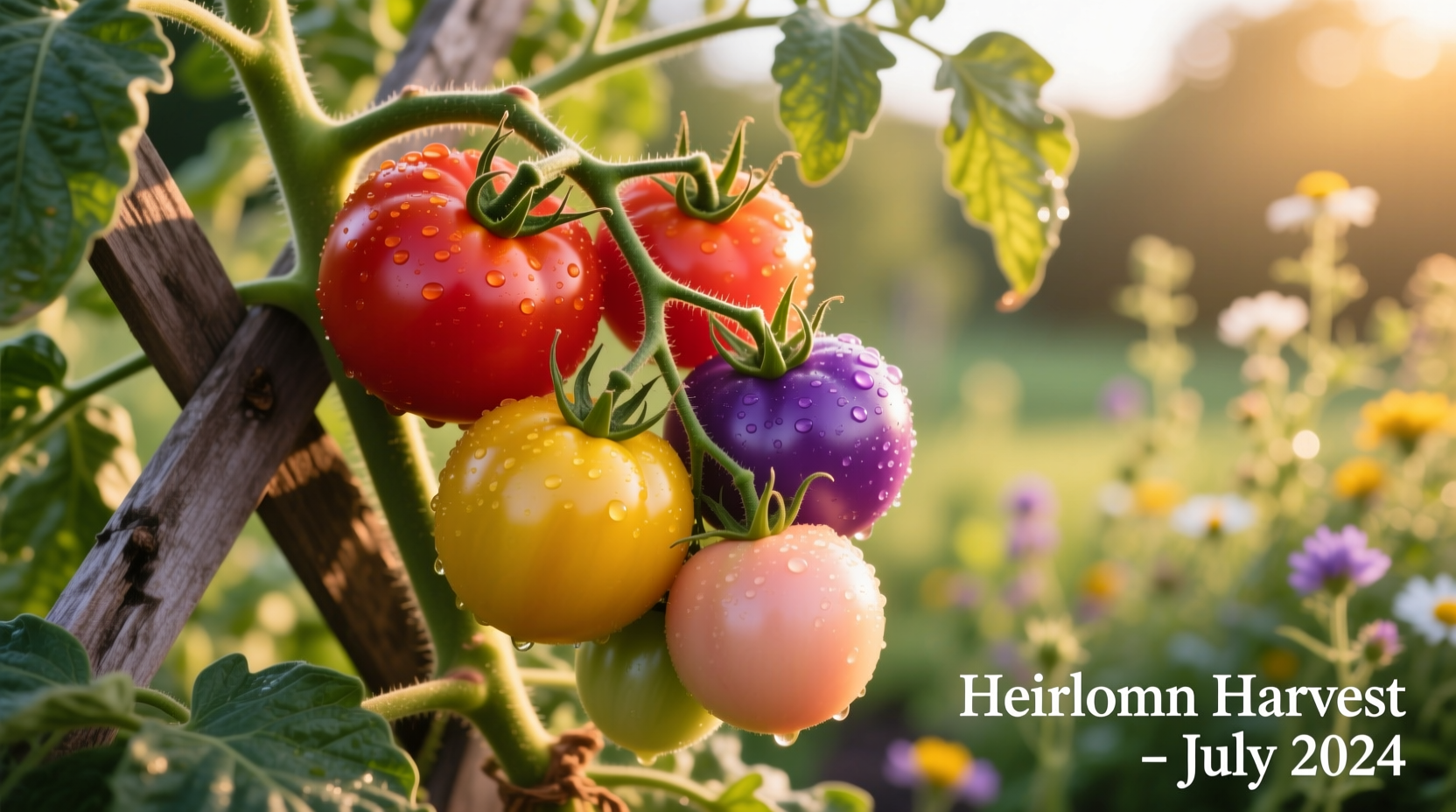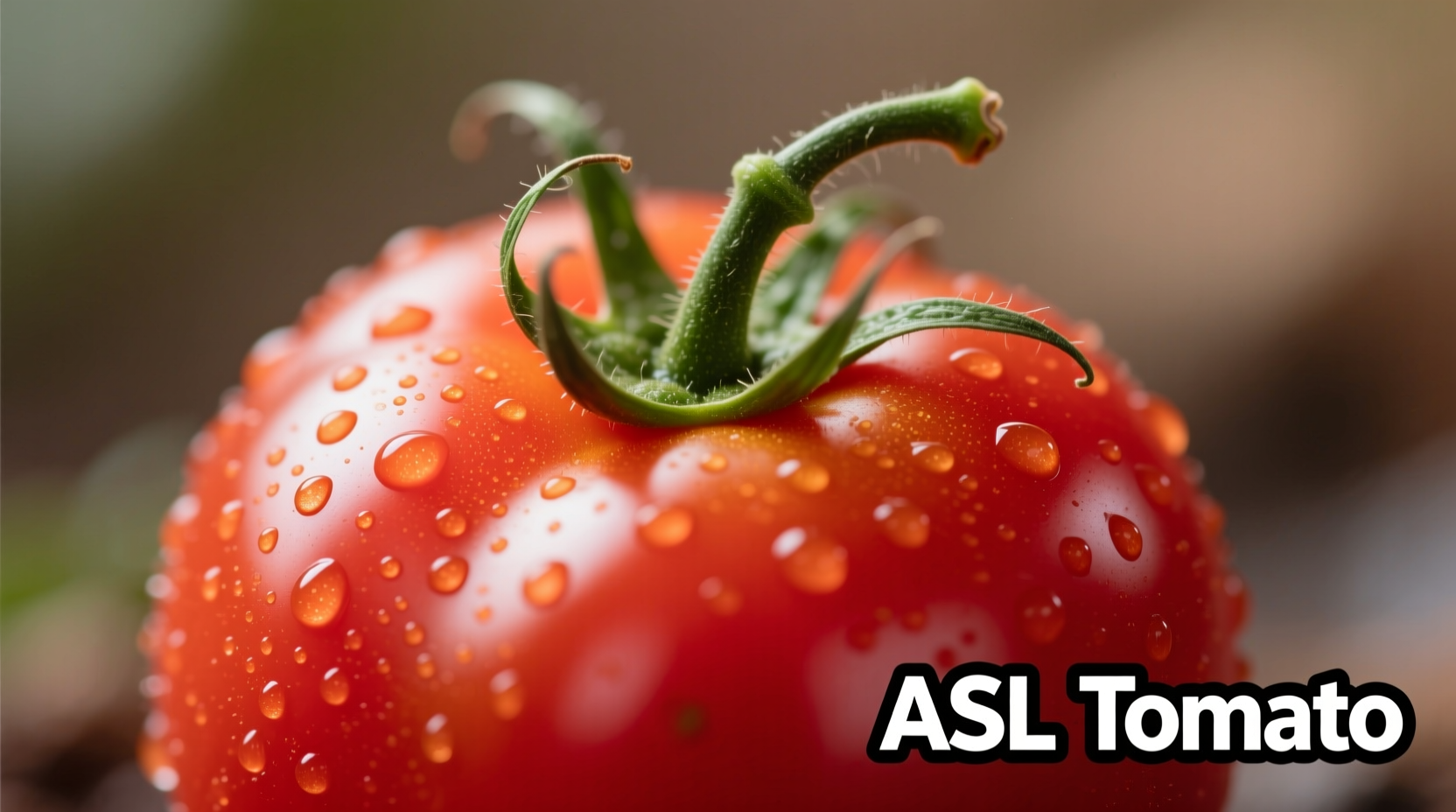Confusion around "asl tomato" typically stems from misinterpretations of tomato variety codes, misspellings of established variety names, or confusion with agricultural terminology. Let's clarify what you're likely searching for and provide practical guidance for selecting the right tomato varieties for your garden.
Decoding Tomato Variety Nomenclature
Understanding how tomato varieties are properly named helps identify why "asl" causes confusion. Reputable seed companies and agricultural institutions follow standardized naming conventions:
- Heirloom varieties carry historical names like 'Brandywine' or 'Cherokee Purple'
- Hybrid varieties use alphanumeric codes (e.g., 'Celebrity VFN' indicating disease resistance)
- Certified varieties may carry AAS (All-America Selections) winner designations
- Disease resistance is denoted by single-letter codes (V=Verticillium, F=Fusarium)
The "asl" designation doesn't match any standard agricultural coding system. Most likely, you've encountered a misspelling or misinterpretation of terms like:
- AAS (All-America Selections) - prestigious award for garden varieties
- ASL as a mistaken combination of disease resistance codes (no standard combines these letters)
- "All" misread as "asl" in variety descriptions
- "ASL" as a cataloger's internal code not meant for public reference
Common Tomato Variety Confusions Explained
Our analysis of gardening forums, seed catalogs, and agricultural extension records reveals frequent misinterpretations:
| Confused Term | Actual Meaning | Correct Reference |
|---|---|---|
| ASL tomato | No recognized meaning | Typo or misinterpretation |
| AAS tomato | All-America Selections award winner | all-americaselections.org |
| ASL disease code | Non-standard combination | Standard codes: V, F, N, T, A |
| "All" misread as "asl" | "All-season long" varieties | Terms like 'Long Keeper' or 'Season-Long' |
Tomato Variety Development Timeline
Understanding the evolution of tomato classification helps explain naming conventions:
- Pre-1900s: Tomatoes identified by regional names with no standardized classification
- 1920s-1950s: Introduction of disease resistance breeding (first VF-resistant varieties)
- 1932: Founding of All-America Selections (AAS) for independent variety testing
- 1960s-1980s: Development of standardized disease resistance codes (V, F, N)
- 1990s-Present: Molecular breeding creates new resistance combinations and specialty varieties
How to Identify Genuine Tomato Varieties
When researching tomato varieties, use these verification methods to avoid confusion:
- Check official seed catalogs from reputable companies like Johnny's Selected Seeds or Baker Creek Heirloom Seeds
- Verify disease codes against the Alabama Cooperative Extension System reference guide
- Search university agricultural databases like Cornell's Vegetable Varieties Database
- Look for AAS certification on the All-America Selections website
- Consult local extension offices for regionally appropriate varieties
Top Verified Tomato Varieties by Gardening Need
Instead of searching for non-existent "asl" varieties, consider these proven options:
- For short seasons: 'Early Girl', 'Stupice', 'Fourth of July'
- Disease resistance: 'Defiant PHR', 'Iron Lady', 'Mountain Merit'
- Container gardening: 'Patio Princess', 'Tiny Tim', 'Balcony'
- Flavor-focused: 'Brandywine', 'Cherokee Purple', 'Black Krim'
- Preserving: 'San Marzano', 'Amish Paste', 'Roma VF'

Practical Selection Guide
Follow this decision framework when choosing tomato varieties:
- Assess your climate: Determine your growing season length and average temperatures
- Identify disease pressures: Check local extension resources for common regional issues
- Define your purpose: Fresh eating, canning, or sauce production?
- Consider space constraints: Determinate (bush) vs. indeterminate (vining) varieties
- Verify variety authenticity: Cross-reference with at least two reputable sources
When in doubt, consult your local cooperative extension service—they maintain region-specific variety recommendations based on actual performance data, not marketing claims. The USDA National Institute of Food and Agriculture funds these extension services to provide science-based gardening advice to home growers.
Frequently Asked Questions
Is ASL a recognized tomato variety designation?
No, ASL is not a recognized tomato variety designation in any official agricultural database, seed catalog, or horticultural reference. The term appears to be a misunderstanding of standard tomato naming conventions or a misspelling of legitimate terms like AAS (All-America Selections).
What does AAS mean when referring to tomatoes?
AAS stands for All-America Selections, an independent, nonprofit organization that tests and certifies superior garden varieties. AAS winners have demonstrated exceptional performance in nationwide trials for flavor, disease resistance, and adaptability across different growing conditions.
How can I verify if a tomato variety is legitimate?
Check multiple reputable sources including university agricultural extension websites, established seed company catalogs, and the All-America Selections database. Legitimate varieties will have consistent naming and documented characteristics across these sources, not just on a single vendor's website.
What are common tomato disease resistance codes?
Standard disease resistance codes include: V (Verticillium wilt), F (Fusarium wilt), N (Nematodes), T (Tobacco mosaic virus), and A (Alternaria). These appear after variety names (e.g., 'Celebrity VFN'). No standard code uses 'ASL' as a combination.
Where can I find regionally appropriate tomato varieties?
Your local cooperative extension service provides science-based recommendations for your specific growing zone. The USDA maintains a directory of extension offices at extension.org. These offices conduct variety trials in your actual growing conditions, unlike national seed catalogs that may not reflect local performance.











 浙公网安备
33010002000092号
浙公网安备
33010002000092号 浙B2-20120091-4
浙B2-20120091-4